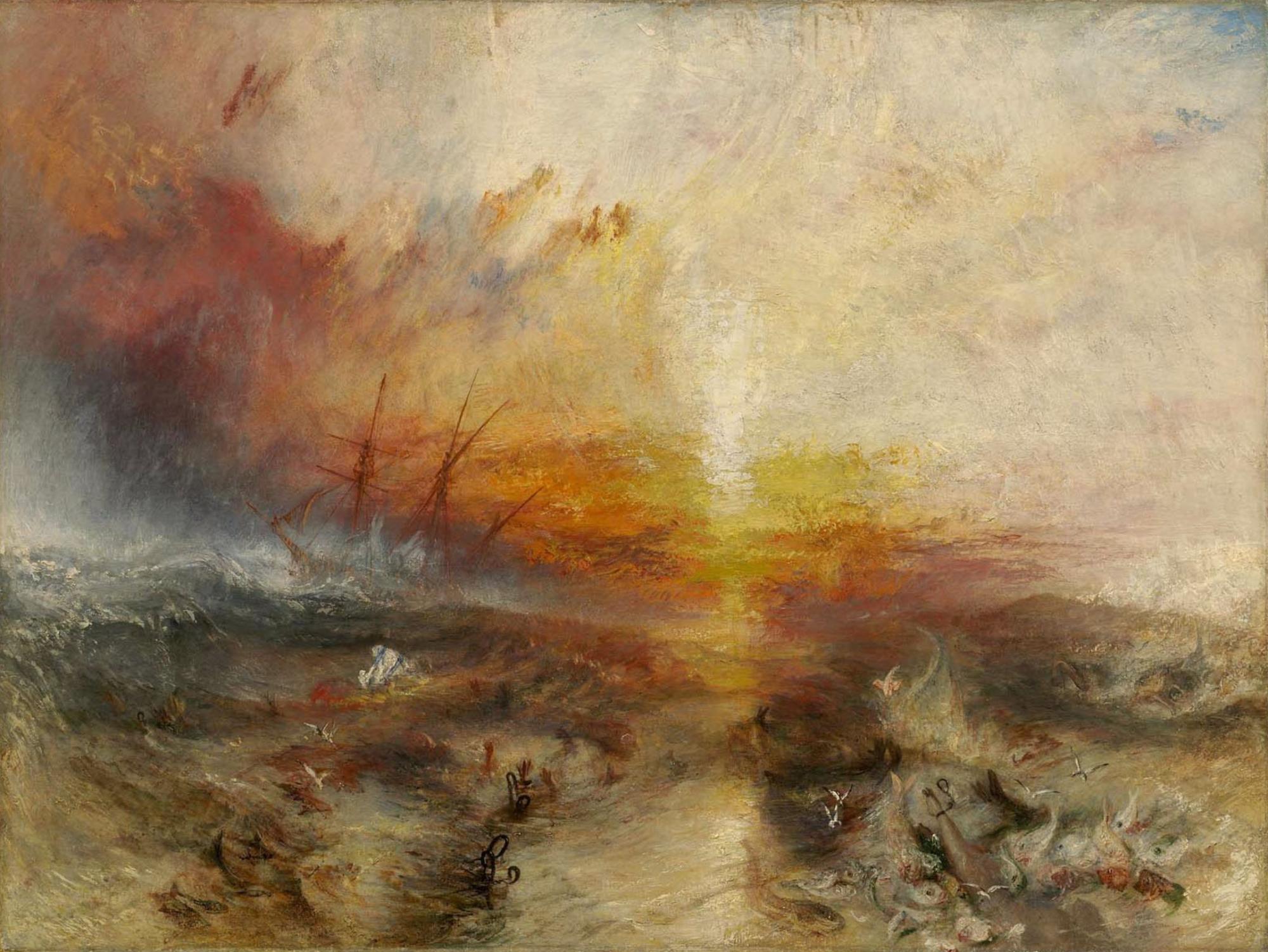Created by Jordan Larson on Wed, 03/17/2021 - 14:14
Description:
A prominent and important work of art centered around The Zong Massacre is J. M. W. Turner’s, The Slave Ship. Turner originally titled his painting Slavers Throwing overboard the Dead and Dying – Typhon coming on. This is essentially describing The Zong Massacre. A tragic event where slavers participated in throwing overboard slaves. This painting is a description of the tragic occurrence of the massacre and other horrors of the slave trade throughout the Middle Passage. The painting shows a sunset with red, orange, and yellow hues. These colors are portrayed over a stormy and wavy sea with a ship in the background. Probably one of the more striking parts of the painting is the chaotic slaves thrown in the water surrounded by chains and swimming fish. These aspects of the painting show the horrible occurrence of the Zong Massacre and the slavers throwing the slaves overboard. It shows the pain and turmoil that was faced by these slaves through the chaos that Turner portrayed in the water.
Turner published this painting along with one of his unfinished poems Fallacies of Hope.
Aloft all hands, strike the top-masts and belay;
Yon angry setting sun and fierce-edged clouds
Declare the Typhon’s coming.
Before it sweeps your decks, throw overboard
The dead and dying – ne’er heed their chains
Hope, Hope, fallacious Hope!
Where is thy market now?
This poem further encapsulates the painting through the author's lens. We can see his descriptions such as the angry setting sun and the fierce-edged clouds. An obvious connection to the painting, but also his statement to throwing overboard the dead and dying. This is a connection to what he first titled his painting Slavers Throwing overboard the Dead and Dying – Typhon coming on. These lines of the first title are included in this poem describing the painting. It presents the fear and lack of hope among the slaves. With Turner being an anti-slavery abolitionist, it raises the questions of the meaning of the painting and how the poem connects. Turner’s The Slave Ship is a representation of the horrors of the Zong Massacre and slavery, yet also a declaration to help bring attention to these matters.
Work Cited:
Lori Landay and Dr. Beth Harris, "J. M. W. Turner, Slave Ship," in Smarthistory, December 9, 2015, accessed March 17, 2021, https://smarthistory.org/j-m-w-turner-slave-ship/.
McQuillen, Charles. “Give Voice to the Zong Massacre and the Slave Trade’s Middle Passage.” McQuillen Studios Art Education Advocacy , charlesmcquillen.com/give-voice-to-the-zong-massacre-and-the-slave-trades-middle-passage/.
Copyright:
Associated Place(s)
Part of Group:
Artist:
- Joseph Mallord William Turner


